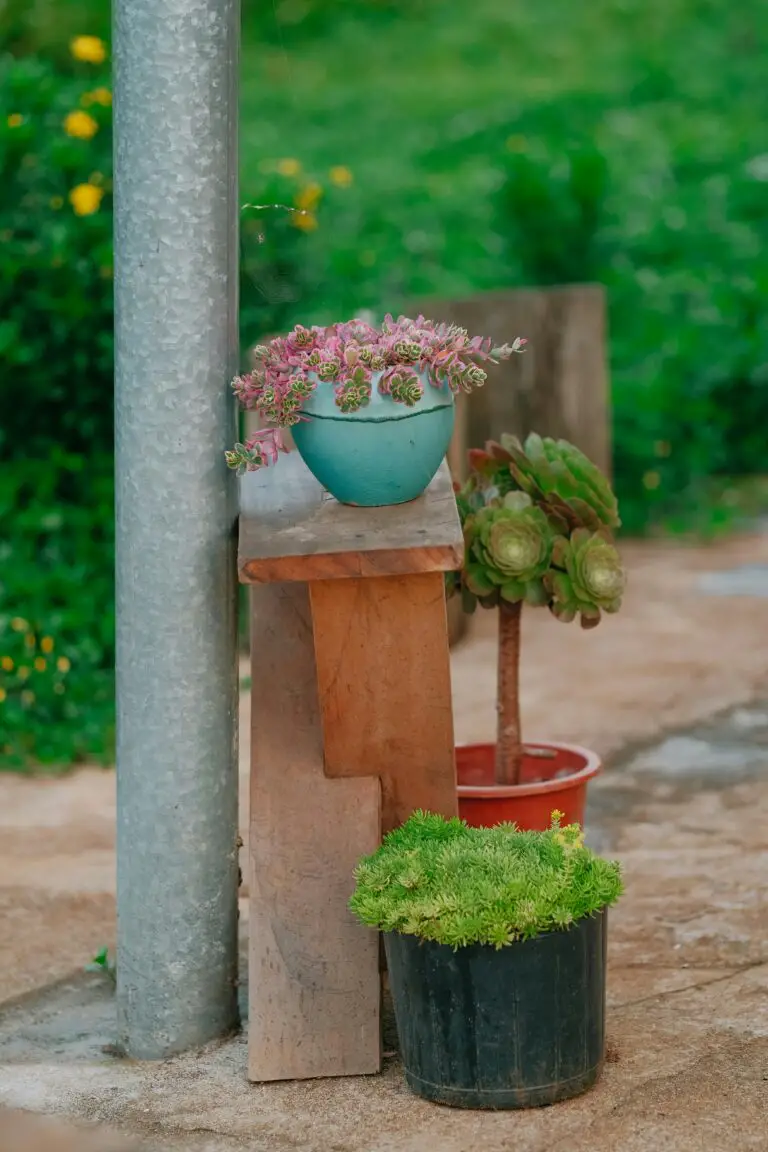Introduction to Sedum Winter Care
As the crisp air starts to nibble at the edges of autumn, it’s the right time to turn our attention to Sedum, affectionately known as Stonecrop, and its needs before the winter blanket settles in. Sedum isn’t just another pretty face in the garden; it’s a hardy survivor, with a life cycle that begs for a little extra TLC as the days grow shorter. So, let’s dive into the frosty facts and prepare these resilient beauties for the chilly months ahead.

If you picture a garden as a stage, Sedum plays one of the lead roles, flaunting its vibrant colors and unique textures right when other plants might be taking their final bows. But what happens when the performance of autumn ends, and the cold intermission of winter begins? It’s simple – like a seasoned actor, Sedum doesn’t exit; it transforms. Those luscious leaves and stems might seem invincible, but they harbor a secret vulnerability to winter’s freezing grip if not cared for properly.
Discover more about enhancing your garden’s charm through strategic sedum care.
Seasonal maintenance is pivotal, and understanding when to trim Sedum can be the difference between a plant that merely survives and one that thrives. As the frosts arrive, some gardeners argue for the value of letting Sedum stand, with its seed heads offering a whimsical frost-covered spectacle while serving as a buffet for birds. Others advocate for a pre-winter trim, aiming to prevent any damage that rot and excess moisture might cause, ensuring perennial health and beauty when the snow melts away. Each cut, each decision, shapes the stage for next year’s glorious Sedum display.
In essence, winter care for Sedum is not only about preserving a plant; it’s about setting the scene for future growth, color, and life. It’s an investment in the coming spring, a bet on blossoms that will pay dividends in the form of garden splendor. So as we bundle up and retreat indoors, let’s not forget the green companions in our gardens that rely on us to help them brave the big chill. After all, a garden’s beauty is the summation of the care we impart in every season, especially winter.
The Sedum Species: Understanding Your Plant
When you find yourself questioning should sedum be cut back before winter, it’s crucial to recognize that Sedum is not a one-size-fits-all kind of plant. There’s a whole spectrum of these succulent beauties, each with their unique flair and tolerance to Jack Frost’s touch. Before branding your pruning shears, pull up a garden stool and let’s delve into the world of Sedum.
Imagine a tapestry woven with thick, fleshy leaves, some splashed with autumn’s fiery hues, others cool as a winter’s sky—this is your garden’s Sedum section. They’re not just pretty faces; these plants are survivalists. Be it the ‘Dragon’s Blood’ spilling its crimson across your rockery, or the cheerful clusters of ‘Autumn Joy’ sedum heralding fall’s arrival like clockwork.
But it’s not simply about aesthetics. Knowing your Sedum’s predispositions can mean the difference between a winter wonderland and frostbite fatalities. Let’s consider two real-life contenders: ‘Cape Blanco’, hailing from the stonecrop family, flaunts a frosty resilience, while ‘Coral Carpet’ blushes in balmier settings.
Each species shares a penchant for well-draining soil and an aversion to wet feet, which can spell doom in winter’s sodden embrace. If you have your heart set on a luscious ‘Autumn Joy’ in your garden, step into our greenhouse of knowledge for some planting success tips that will see your specimens flourishing.
Armed with this botanical briefing, you might deduce that a pre-winter trim could help some sedum avoid rot during the somber months. Yet for others, their withered stems and seed heads stand like valiant soldiers against the somnolent landscape, providing much-needed sustenance to wildlife and a visual haven to the winter-weary gardener.
So, should sedum be cut back before winter’s chill? The answer is etched in the DNA of each unique sedum species—a tailored approach will always triumph.
Embracing these resilient perennial troops requires a saga’s worth of storytelling, hardly contained by gardens’ whispering winds and gently trodden paths, but rather, in the very essence of each variant’s lively, yet stoic nature.

To Cut or Not to Cut: Evaluating Your Sedum
As the brisk winds of fall morph into the frosty breath of winter, every gardener faces a dilemma with their beloved Sedum plants: should you grab the shears and trim them down, or is it better to let them stand tall against the chill? Buckle up, green thumbs—it’s time to dissect this gardening conundrum and save you from a potential plant predicament.
Let’s set the scene with a tale of two gardeners. On the one hand, we have Susan, who shears her Sedum back every autumn, come hell or high water. On the other side is Bob, who swears by leaving his plants au naturel, convinced that the frost-kissed tops add unparalleled winter interest to his garden beds. Who’s got it right? Well, they both might, depending on a few critical factors we’re about to explore.
First off, consider plant hardiness—the inherent armor of your Sedum against Jack Frost’s icy grip. Some varieties of Sedum, tougher than old boots, can shrug off the cold without batting an eye. But other more delicate types might crumble faster than a cookie in a toddler’s fist if not given the winter haircut they prefer.
Next up, local climate is your gardening GPS. If your area experiences mild winters with few freeze-thaw cycles, your Sedum’s foliage could be the perfect winter jacket. However, in regions where Old Man Winter throws a tantrum, full of heavy snow and ice, trimming back might save your plants from being crushed under the weight of the frozen despair.
Finally, each Sedum variety brings its own set of rules to the pruning party. The sprawling ‘Autumn Joy’ might champion a trim to prevent flopping, while the compact ‘Coral Carpet’ could laugh in the face of snippers, splendid in its winter coat of dried blooms.
Seasoned gardeners might regale you with their successes and oops-a-daisies, helping you navigate the decision of whether Sedum should be cut back before winter. So, watch closely, ask around, and most importantly, know your Sedum. Because when you play the game of perennials, you trim or you grow—in both cases, knowledge is your power.
Pros of Pruning: Why Some Gardeners Cut Back Sedum
As winter whispers promises of snowflakes and slumber, many green-thumbed enthusiasts ponder whether their beloved Sedum should be tucked in for the chilly season or given a trim. Let’s dive into the thriving garden of wisdom to uncover the benefits of cutting back Sedum before winter sets in.

Imagine this: a brisk autumn day, your hands wrapped around a warm mug of cider, and you’re out in your garden, pruning shears in hand. You’ve decided to cut back your Sedum, and for good reason. Promoting vigorous growth in the spring is like investing in your garden’s future. Just like cutting back overgrown branches can revitalize a mature tree, trimming Sedum can lead to a burst of fresh, robust growth when the snow melts away.
Another merit of preemptive pruning is reducing pest habitat. Unkempt Sedum might as well be a vacancy sign for would-be freeloaders looking to escape the frost. By cutting back the plant, you’re minimizing the nooks and crannies where pests can settle in, ensuring your Sedum emerges in the spring as pristine as a dew-kissed blossom.
It’s not just about growth and pests, though. There’s also the concern of preventing snow damage. A heavy snowfall on top of full-grown Sedum is akin to piling weights on a feather—eventually, it’s going to be too much. A neatly trimmed Sedum can withstand winter’s harshness much better, rising like a phoenix come spring.
Professional gardeners often recommend this practice, and timing is paramount. Like a well-choreographed dance, knowing when and how to cut back is critical. Want to learn more about making the most of your winter garden? Explore our article on pruning tips for healthy growth for all your Sedum and other succulents.
Analyzing the pros and cons, it’s clear that there’s a compelling case for getting those shears out before winter. It’s not just about the immediate aesthetics; it’s a strategic move for the long-term vitality of your Sedum. With proactive care, these resilient plant champions can brace winter’s chill—and burst forth in springtime glory.
Cons of Cutting: When to Leave Sedum Intact
Oh, the lovely Sedum, with its diverse forms and hardy nature, is certainly a gardener’s delight. But before you make a move to prune, consider this: sometimes leaving Sedum untouched as winter approaches can bring unexpected benefits. You see, while a trim might be on your to-do list, there’s a strong case for going au naturel with these succulent beauties.
Take the enchanting winter interest that an intact Sedum provides. Picture this: a serene, frost-laden garden with the skeletal silhouettes of Sedum heads standing tall. They’re like natural sculptures in your garden gallery, capturing the magic of icy mornings and glistening under the feeble winter sun. Indeed, they transform the bare winter landscape into a wonderland, making a compelling aesthetic argument against reaching for those clippers.
But it’s not just about looks. It’s also about protection. Those dried stems and flower heads act like nature’s own insulation, shielding the crown of the plant from the harsh elements. And when spring finally peeks around the corner, the Sedum will emerge unscathed, ready for a new season of growth.
Let’s not overlook our local wildlife, which can find solace in the untouched foliage of Sedum during the colder months. Birds can feast on the seed heads, and beneficial insects may take refuge in the nooks and crannies of the plant’s framework. As explained on Ask Extension, maintaining Sedum’s structure through winter can offer much-needed foraging opportunities for wildlife, contributing to the biodiversity in your own backyard.
Consider this real-life example: a gardener friend of mine made the choice to forgo the fall cut-back, and her garden became a haven for finches and chickadees, fluttering about the frosted Sedum, busily plucking seeds throughout the cold months. Not only did it provide a fascinating show but it also fostered a micro-ecosystem right in her garden, all because she let her Sedum stand tall.
So while the debate on whether should sedum be cut back before winter continues, it’s clear there are times when doing less really does mean more. It’s worth considering the perks of eschewing the snip for a season and embracing the uncut charm of your Sedum. After all, sometimes nature’s way is the best way.

The Right Timing: Best Practices for Sedum Pruning
When it comes to tending to your Sedum plants, timing isn’t just a tick-tock on the clock—it’s an art form. The act of pruning is like a dance with nature, a choreography that aligns with the rhythm of the plant’s life cycle and the local climate’s tempo. So, should Sedum be cut back before winter? Let’s dig into the nitty-gritty and unveil the secrets to perfecting this gardening waltz.

Imagine you’re a conductor, with shears as your baton, guiding the Sedum through its seasonal performance. You wouldn’t want the crescendo too early or too late, and the same goes for pruning. Aim for late fall, when the Sedum’s flowers have serenaded the garden with their last hurrah, transitioning to seed heads that add texture to the autumn tapestry. This period, right before winter’s frost nips at its heels, is the perfect intermission for you to step in.
Recognizing the right moment to prune can feel as intuitive as interpreting the sky’s shades for weather. Observe the plant’s foliage starting to bow out, signaling that it’s ready for a trim. This keeps the Sedum robust and allows it to pour its energy into next spring’s showcase. In regions where the winters are particularly harsh, a pre-frost pruning can safeguard your Sedum, ensuring it emerges in the spring, ready to take center stage once more.
For those in milder climes, where winter is more a pause than a full stop, consider holding off on reaching for your shears. The dormant season can play host to an encore performance of frost-kissed blooms that lend an ethereal quality to the winter garden, whilst providing a sanctuary for beneficial critters.
Remember, in gardening, as in life, it’s often about finding the balance. With Sedum, it’s not always a clear-cut (pun intended) decision—each plant in your garden is a unique individual. Pruning is less about chopping willy-nilly and more about measured, mindful cuts. The wisdom here: know your Sedum, know your weather, and read nature’s cues for your cue. Then, make the cut confidently, with the well-timed precision of a seasoned gardener. It’s your garden, after all, and you’re the maestro guiding each Sedum to its seasonal finale.
Step-by-Step Guide: How to Trim Sedum
When it comes time to prepare your sedums for the winter months, a good trim can be the equivalent of tucking them in for a long, cozy slumber. But where do you start? Fear not, plant paladin, let’s walk through the snip-snap of sedum winter prep and get your green friends ready for a fresh debut come spring!
Sharpen Those Shears!
Before you make the first cut, ensure your tools are up to the task. Sharp, clean shears make precise cuts that heal quickly, preventing disease. Imagine if you were getting a haircut; you wouldn’t want the stylist using a dull blade, would you? Your sedum deserves the same care!
Pro Tip: Dip your shears in a solution of one part bleach to nine parts water between cuts, especially if you’re tending to multiple plants. This will prevent any inadvertent spread of infection.
Sedum’s Suit of Armor
As tempting as it may be to chop away, consider the plant’s root system as its suit of armor against the winter chill. Approach trimming with strategic respect. Identify the sedum’s spent flower stalks and foliage that look like they’ve told their last summer tale. These are the bits that need to go.
Cut, But With Care
It’s time to trim, but think of it as a thoughtful pruning rather than a full-scale haircut. Aim to cut back the sedum to about 1 to 2 inches above the soil line. Doing so encourages the plant to focus on its roots, building up energy for a magnificent spring return.

Timing Is Everything
Choose the right time to trim. Late fall, after several frosts, is ideal. By then, your sedum has likely transferred all its beneficial nutrients to the roots for the winter. This timing also offers a helping hand in pest control, as many insects use plant debris as their own winter condos.
Real-Life Example: My neighbor’s sedum once hosted a family of earwigs because they skipped the fall trim. Not the guests you want at your garden party!
Spring Sprouts Await
After your careful trimming, what comes next? Patience! Tread lightly around the trimmed plant, and you’ll be rewarded. When spring comes knocking, fresh sprouts will emerge, heralding a season of lush growth and vibrant colors.
Remember, your sedum is more than a plant; it’s a living piece of your garden tapestry. Each trim is a thoughtful stroke on the canvas of your garden’s masterpiece. Happy trimming!
Winter Protection Strategies for Sedum
As the mercury drops and Jack Frost begins to nip at our doorstep, it’s time to tuck our Sedum plants into their winter beds. Sure, you’re thinking about whether should sedum be cut back before winter, but let’s not stop there! Let’s dive into the frosty world of mulching, sheltering, and other sure-fire tactics to keep your hardy “stonecrops” thriving through the chills.
Blanket Your Blooms: The Magic of Mulching
Think of mulch as a cozy blanket for your Sedum’s roots. As you prepare to cut back your plants, add a layer of organic mulch like straw or shredded leaves to insulate the soil. This isn’t just a snuggle-fest; mulching helps regulate soil temperature, preserves moisture, and provides nutrients as it decomposes. It’s like giving your plants a warm hug and a snack to see them through the winter.
Creating a Sedum Sanctuary: Give Them Shelter
But wait—there’s more than just mulch! Creating a temporary windbreak can be a game-changer, especially for those living in areas where winter winds are harsher than a critic’s pen. Erecting burlap screens or using a surrounding evergreen arrangement can break the bluster, giving your Sedum the seclusion it needs to avoid desiccation and cold damage.
If you’re a visual learner and you’d like to fall even more in love with these cold-hardy perennials, here’s a little treat for you:
Moving on, don’t underestimate the power of positioning. Placing Sedum in a spot that gets some winter sun can help them muster through the cold. A sunny nook sheltered from the wind can be the perfect winter getaway for your photosynthesizing friends.
Let’s not forget about hydration, too. Although Sedum are drought-tolerant, giving them a drink before the ground freezes can make a difference. Hydrated soil retains heat better than dry soil, and this slight edge might be all that’s needed to help your plants make it to spring unscathed.
Clumping together potted Sedum or moving them to a sheltered outdoor area can also defend against Jack Frost’s bite. The combined soil warmth and reduced exposure ensure that your potted beauties stand a solid chance against the creeping cold.
Every garden has its microclimates, and your Sedum’s winter success might hinge on finding just the right nook or protective measure. But fret not, with a blend of mulching, sheltering, and a keen eye for the right location, your resilient Sedum are set to emerge from winter’s chill as robust as ever.
Common Mistakes to Avoid in Sedum Winterization
As the mercury plummets, even the hardiest of perennials like sedum can fall victim to well-intentioned, but ultimately harmful, winter prep. Let’s clear the frost and reveal the no-nos in sedum winter care, making sure your succulent buddies are bundled up right!

Chopping Down Too Soon: A classic blip happens when gardeners get scissor-happy and cut back sedum before the first frost. Sedums need those tops to shield their crowns from the cold. If you snip them too early, you expose the heart of the plant to winter’s wrath. It’s like sending your kid out in a blizzard without a coat—brr!
Overwatered and Frozen: Picture this: An icy glass of water on a chilly day—refreshing, right? Not for your sedum! Continue watering right up until winter and you might just give your plants an unwanted ice bath. Their roots don’t want a popsicle bed, they want to stay snug and dry!
Smothered in Mulch: Mulch can be a great insulator, but overdo it, and your sedum plants might just find themselves gasping for air. Think comforter, not an avalanche! A gentle blanket of mulch is all they need to keep warm without feeling smothered.
Winter Sunburn: Yep, even in winter! When the sun sits low and bright on a clear day, if your sedum is exposed after a fresh cut, it can get scorched. The remedy? Wait until the foliage naturally dies back, providing a self-made sunscreen for the delicate plant below.
The Big Cover-Up: Weather gets frisky, and the knee-jerk reaction is to cover up sedum with burlap or frost cloths. But remember, these plants are the Vikings of the garden—tough and resilient. Often, they need less coddling than we think, and too much protection can lead to trapped moisture, which leads to rot. It’s all about balance!
Now that you’re equipped with these pearls of winter wisdom, you can ensure your sedum stands undaunted against the winter chills. Keep it simple and your green friends will thank you with a vibrant show come spring!
FAQs: Your Winter Sedum Care Questions Answered
As the mercury drops and your garden dons its icy winter coat, you’re likely pondering over the well-being of your sedum collection. “Should sedum be cut back before winter?”—it’s a question that’s on the minds of many green thumbs as the seasons change. Let’s delve into this topic with a spade in hand!
Understanding Sedum’s Wintry Whims
Imagine your sedum as the tough, resilient protagonist in a winter saga. It’s a survivor, with a natural inclination to persist through frosty times untrimmed. Yet, just like any main character, it’s not immune to a bit of seasonal stress. The question isn’t merely about survival; it’s about preparing your sedum for a robust comeback when spring unfurls its verdant flag once more.

Conventional gardening wisdom suggests a hands-off approach, letting your sedum stand tall against the winter winds. Not only does this create a picturesque silhouette against the snow-laden landscape, but it also provides a crucial refuge for local wildlife. The seed heads offer a much-appreciated feast for birds when food is scarce.
Pre-Winter Pruning: Yea or Nay?
Nonetheless, some gardeners advocate a light trim before winter sets in—think of it as a bit like putting on a winter coat. By removing only the spent flowers and damaged stems, you’re reducing the risk of rot and pests. It’s a delicate balance, though; overzealous cutting can do more harm than good.
Real-life examples abound where sedum has either flourished or faltered based on these winter decisions. In one case, a gardener’s choice to trim their ‘Autumn Joy’ sedum led to an early and vigorous spring resurgence. In contrast, another’s decision to let nature run its course witnessed their sedum transforming into an eye-catching winter sculpture, complete with frost-kissed blooms.
Each method has its merits and pitfalls, yet the ultimate choice is as unique as your garden. By considering factors such as local climate, sedum species, and personal aesthetics, you’ll find the right answer lies rooted in your own gardening philosophy.
So there you have it—your winter sedum care queries addressed with both horticultural insight and a touch of gardeners’ lore. Whether you choose to trim or let it be, remember that each snip and decision shapes your garden’s wintry narrative and the spring tale to come.



